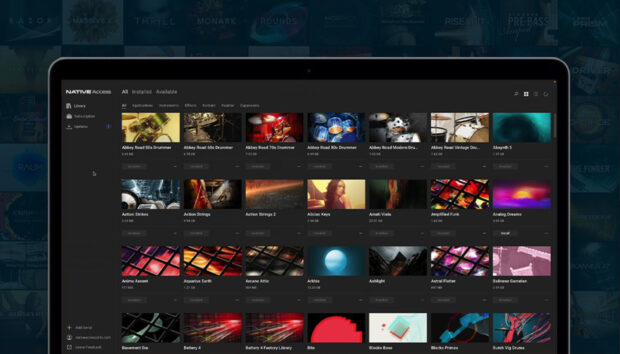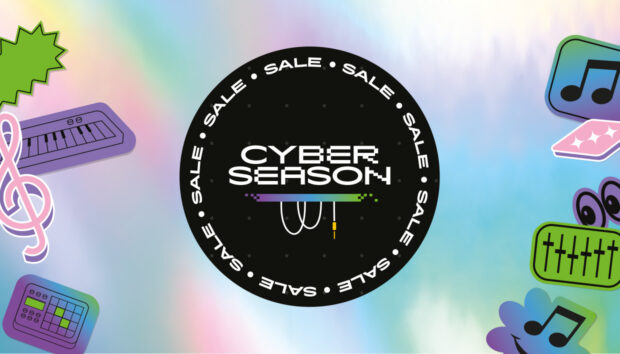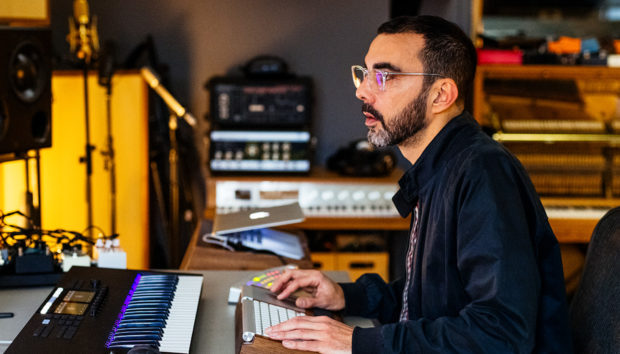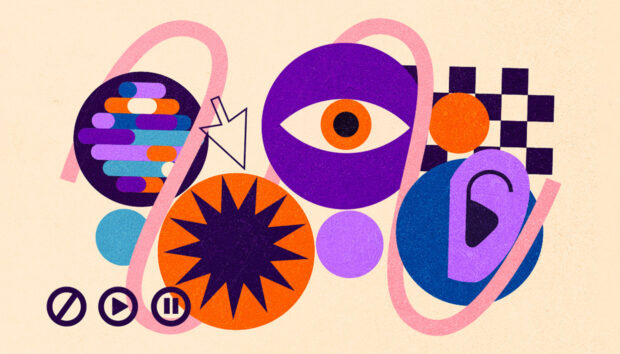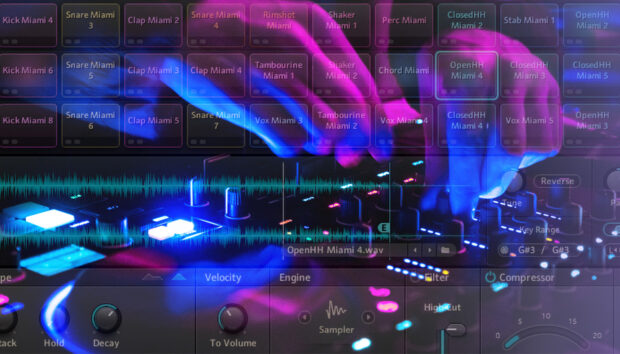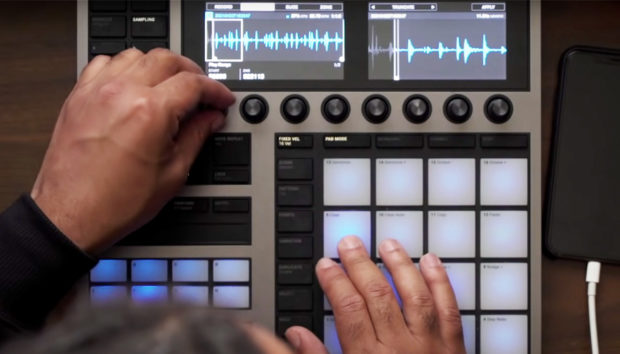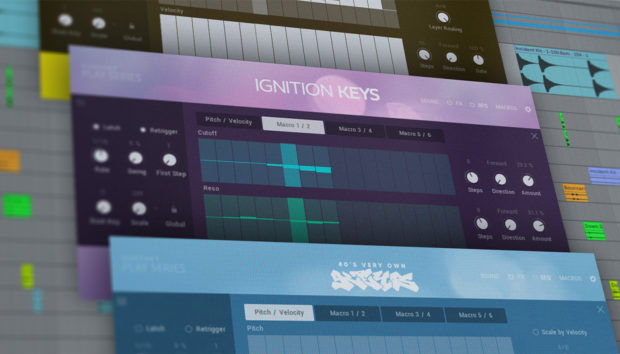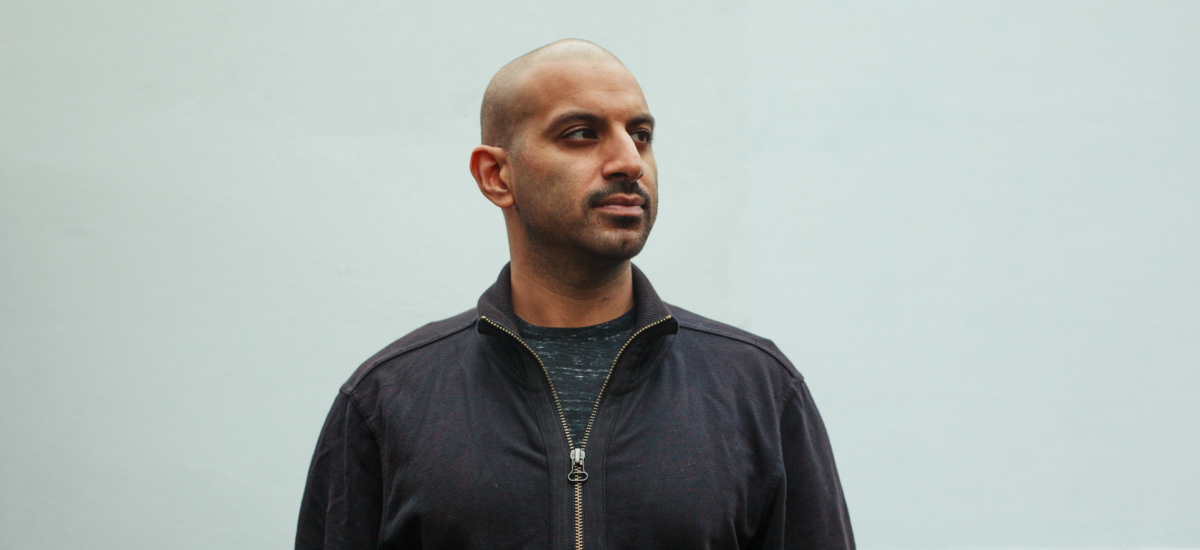
UK dubstep producer Vivek Sharda, a.k.a. V.I.V.E.K, has been a formidable figure in the dubstep scene for over a decade, with releases on labels Deep Medi, Tectonic, in addition to establishing his own imprint for bass-frequency culture, System Music. Talking to Kabuki on behalf of Native Instruments, V.I.V.E.K shares his process on writing music, with MASCHINE and MASCHINE JAM at the heart of his studio. Read on further to check out a brand new track produced exclusively for Native Instruments, made entirely inside MASCHINE.
When we met last time you said you finished revamping your studio, and that MASCHINE is now at the heart of everything. That got me really intrigued. Can you run us through your current setup?
So Maschine has changed everything for me in how I write music. I have my Maschine and Maschine Jam which are hooked up with my computer. I make all the music now in Maschine, and then route the outputs to an analog desk. And what I do is – I actually do it in quite a weird way – I create scenes, and then I trigger the scenes while I’m dubbing the tracks via the analog desk, and then record the result into Logic. Now, every time I finish a track I can’t go back to it. But I have this new sort of attitude towards music, where I treat each track like a painting. Once I’ve drawn my painting, that’s it! So I end up doing 10 or 15 different variations of my track. That’s my signal process. I create everything in Maschine, I trigger my scenes, but I also use the Jam to trigger the patterns.
So you use Logic as a tape machine?
It’s just to record the stereo track at the end basically, I don’t do anything else in Logic.
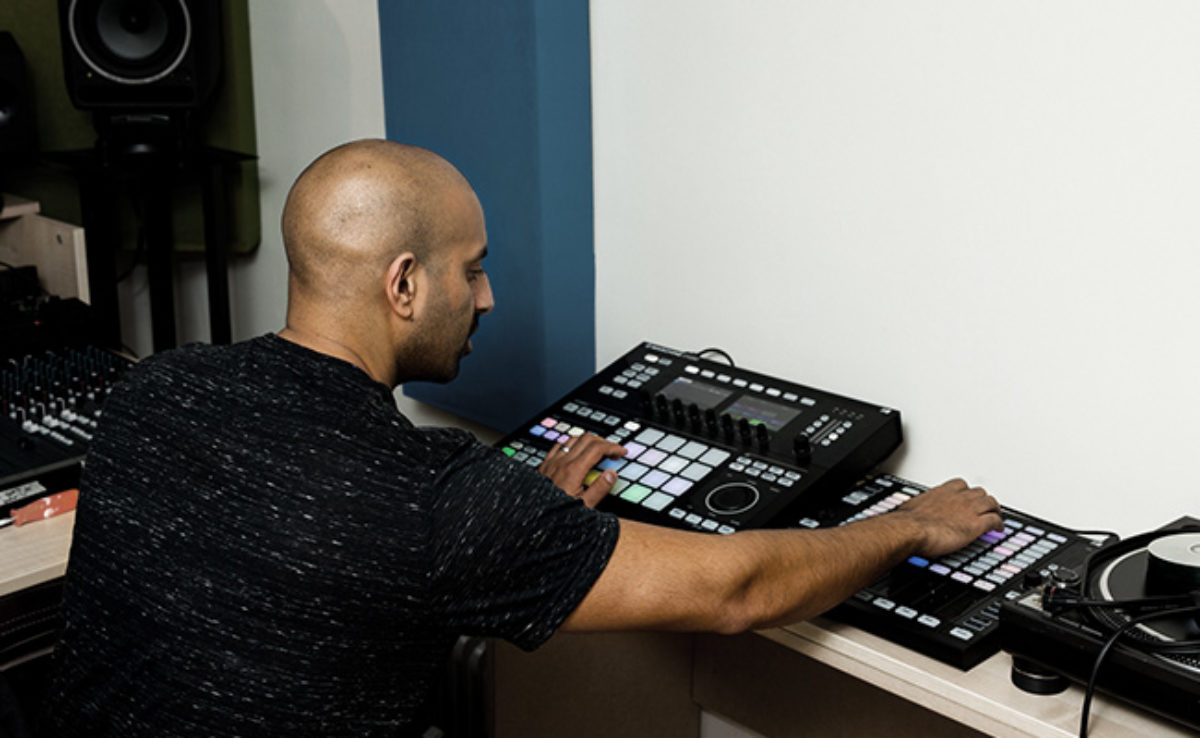
I remember you also said that this approach freed you from the horizontal way of of thinking.
Prior to using Maschine, everything was so linear for me. The way I explain Maschine to people who haven’t used it, and the way I see it, is like this: I’d make a track in Logic, and then I wanted to change the bassline, or I wanted to change some hats. So, I’d do that and save it as a different project. So by the end of working on one track, I’d have 10 different projects. And I couldn’t access these different parts, so this was a problem. And Maschine has changed that for me, as it allows me to have many different projects – as it were – within one project. So from the trigger of a button I can change my patterns, and I create a different scene with maybe a different set of hi-hats, a different bass – this is like from going from drawing with rulers, to drawing a Picasso. This just absolutely incredible to me, it freed me up when going into the studio, I fully enjoy going into the studio now so much more to then when I was just doing the whole linear sequencing.
Your workflow shows that new technology can provide inspiration and allow the artist to fully express themself.
Yes, totally. I kind of missed the Ableton bus, and initially I didn’t really get it. And to be honest, when I first got Maschine I was still not getting it. I understood the hardware side of it, but from the software side it was not making sense, because I was reverting to Logic. But then, when I did get it, I was: ‘oh my god, this changes everything.’ The way it allows you to constantly experiment with what you have, there is nothing out there like it that I have come across.
I like the philosophy of your workflow, that once a track has been recorded, that’s it. I think it’s a great approach in a time where everything can be altered and re-done.
I don’t know if it’s the same for you, but for many other artists that I speak to on a regular basis there is the idea of a perfect beat. And there is no such thing. That’s the beauty of music, that it’s not perfect. So when you have that linear idea of music, that you can keep going into, what I find is – prior to having Maschine – I would make a track, and then I’d make another variation, and another variation, infinite variations, and then by that time I lost the vibe, the vibe is dead. And then go back to the initial first one, and I go, yeah, that’s the best one. So I think what happens is that you overthink things, whereas what I do now, is like going to tape. So if you want to change something, you have to do it again.
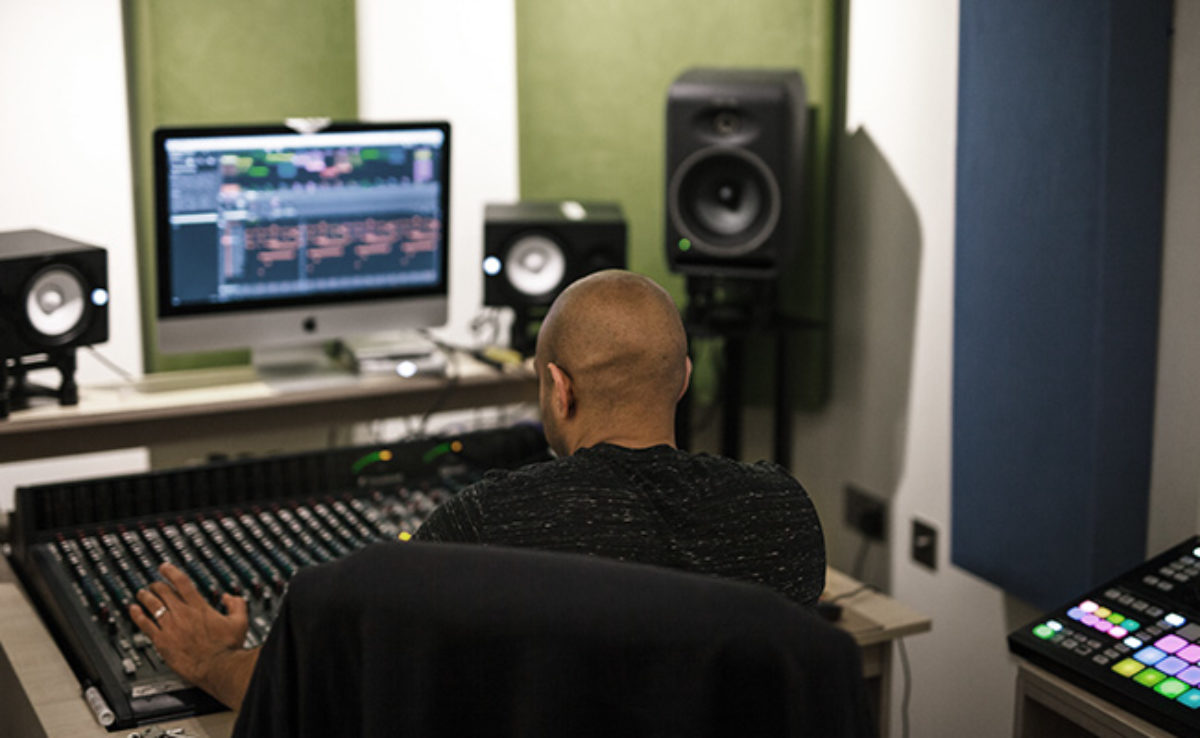
Rewind the tape…
Rewind the tape! And because I’m dubbing, I’m doing the auxes and the reverb – I’m not saying it’s the easiest option, because if you make a mistake then you need to do it again, it’s a bit more time-consuming but I still got my scenes, and I like the way how Maschine allows you to trigger scenes on the bar, or half within the bar. Just by doing that you get a crazy experimental fade between scenes, you can have a sound that has a long release, when you go into the next scene it doesn’t cut off but hangs over, it just sounds awesome.
What I also found really helpful is — I’m not very organized, never have been when it comes to music— that with Maschine, the search function is just brilliant. I know what I want, OK, I want a flute, and then it will give me a list: what sort of flute to do you want? Physical model, long release? I can pinpoint what I want, and nine times out of ten what I’ve got in my head once I’ve typed it in and I’ve gone through the variations, I found what I’m looking for, and I’m talking in seconds!
Again, it shortens the distance between the idea in your head, and you being able to execute it and stay within the vibe.
Absolutely. Another factor is that I’m not clicking a mouse all the time, this hands-on approach is just something I never had. And some people say: “but I use a keyboard“. And I’m like, “this is nothing in comparison to a keyboard! You got the note repeat, you got the velocity sensitive pads, you got the choke facility, you can just make a great-sounding drum beat instantly. I’ve written more music thanks to this in the last six-months than I probably have in the last three years.
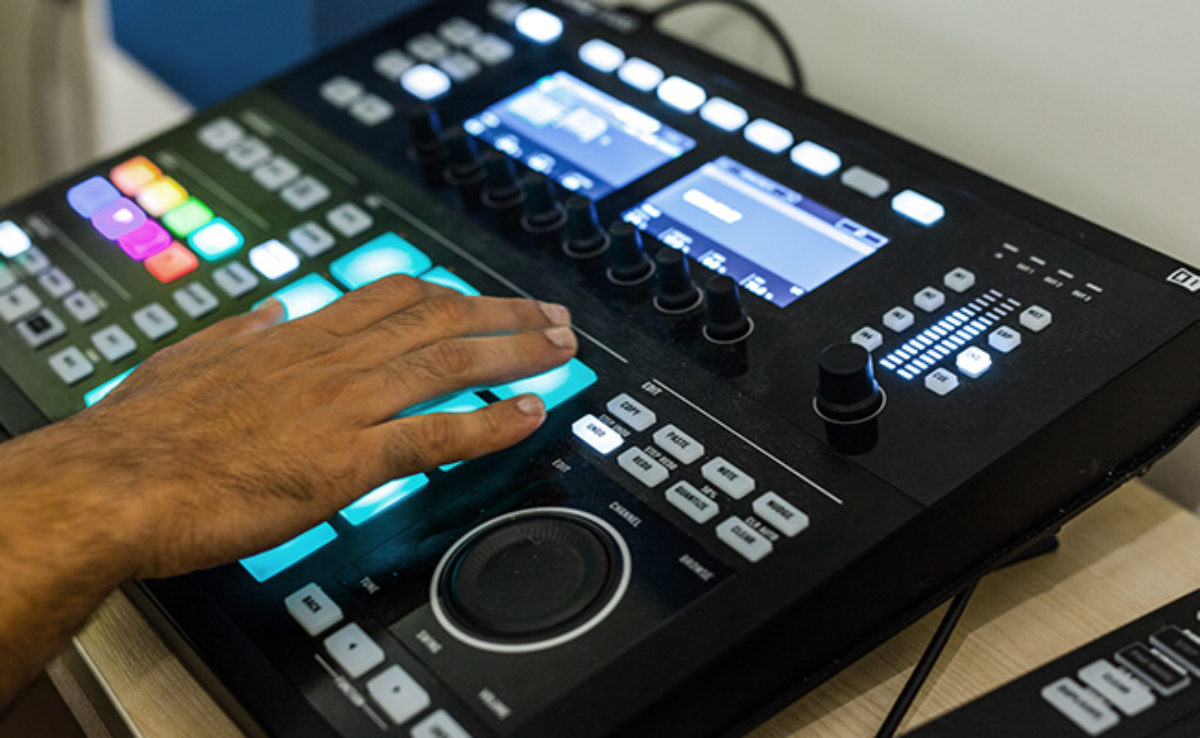
And being able to have fun doing what you do, that’s such a blessing.
There was a time where I lost the enjoyment of the process. That limited me in producing music, and also in wanting to make music. The creativity was there, but it wasn’t being triggered, I wasn’t getting the vibe. Whereas now, I just enjoy going in the studio. Straight away I can write a beat – it’s just brilliant!
Do you have a few tips that you found helpful when working with the MASCHINE?
One thing that bugs me is that you can’t mute individual notes. So what I tend to do is duplicate the pattern, and delete the notes that I don’t want to hear. This way the original sequence isn’t lost. Also, if I make a sound that I like, I save it right away. I can either save it as a sound, or within a Group. So I’m already creating my batch of sounds; a kick I go to, a couple of snares, and effects.
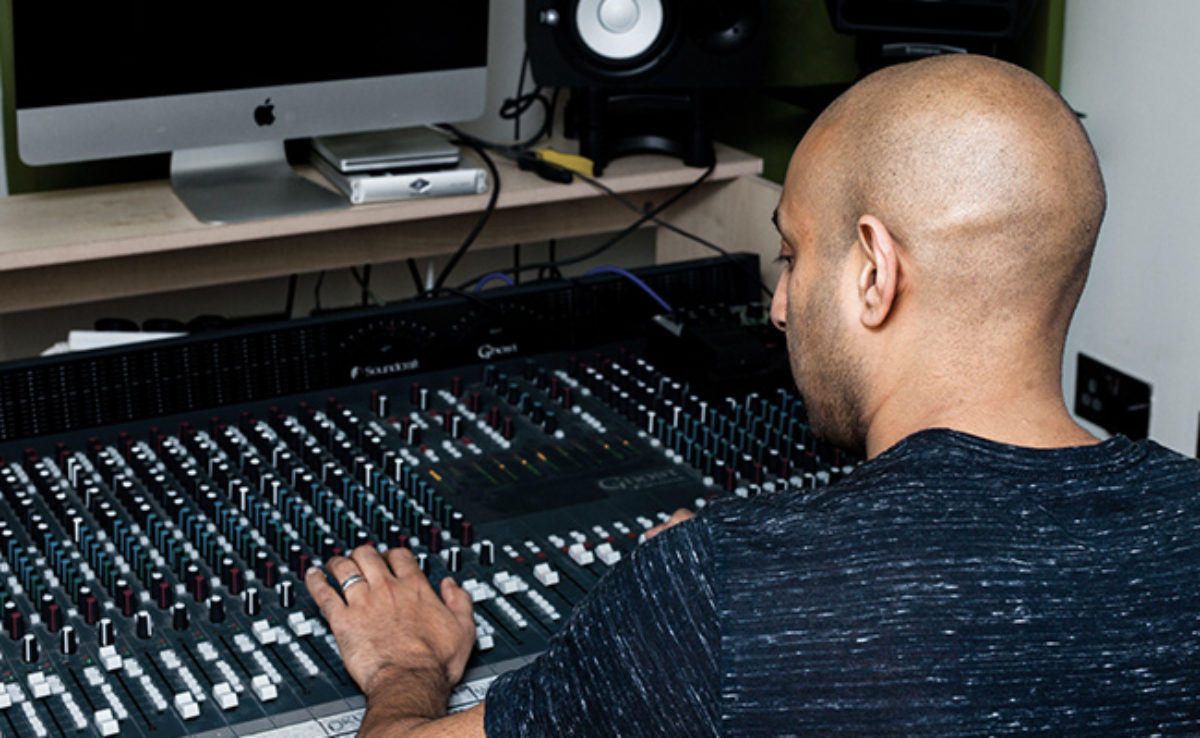
You come from a dub background. Are there any specific dub techniques that you use when working with MASCHINE?
I do a normal send out of the desk into the delay, and the reverb, but then my return goes into a channel, and the effect returns then go into a master group, that I can always further manipulate.
Do you send effect sends back into themselves for feedback?
I tend to do that with a reverb. I might do it with delays now and again, but for the feedback sound I feel it tends to work better with a spring. You can hear it in all my tracks! And since I’m on an analog desk, I could then delay the return of the reverb – you can create this next-level signal chains. But if you put that into context with Maschine, you can also do this sort of thing with the auxes. The auxes allow you to send the signals somewhere else within Maschine.
You’re a hands-on guy. The fun is getting both hands in there and work the tune.
20 years ago a guy had a computer, and he could do a drum pattern with a kick and a snare on the Akai. Then we had these computers which allowed you to create a complete production all in the box. I think we’ve gone from one extreme to another. And Maschine sits nicely in the middle, it gives you that hardware feeling, with the computer side to it. The sounds are in the box, but the creative process is out of the box.
photo credits: Vivek Vadoliya








